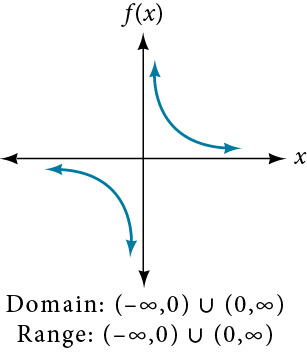Functions, domain and range
Adapted from OpenStax College Algebra 2e1
A function is a relation in which each possible input value leads to exactly one output value.
The input values make up the domain, and the output values make up the range.
We denote the domain and range of a function by and respectively.
Defining functions
We can define a function by giving its rule and describing its domain using the following notation:
The rule, or formula for the function is given by allowing us to do computations such as
The domain of is given by Written in set notation, we have
Domain of a function
We should specify the domain when defining a function, as seen in the above example. The reason for this could be due to context. For example, if represents the number of hours in a day we study, then an appropriate domain would be
Largest possible domains
The domain could also be due to considerations of what is mathematically permitted. For example, we cannot
- divide by zero,
- take square roots of negative numbers, or,
- take the logarithm of zero or a negative number.
For example, the function
has omitted from its domain to avoid division by zero. Meanwhile, the largest possible domains for is while that of is
Range of a function
Using graphs to find the range
We recall that the range of a function refers to the set of all possible output values. A graph helps us find the range as we can visualize all the possible values of
As the following examples will illustrate, the important features of graphs that often affect the range of functions are:
- end-points (be careful of inclusive vs exclusive cases!),
- turning points,
- asymptotes.
Examples

The above function has a left end point with coordinate By considering all possible we get the range

The above function has both end points tending towards infinity. However, there is a minimum point on our graph at the origin, which appears in the computed range of

For this last example above, the range consists of all values except which is a result of the horizontal asymptote Hence we can write the range as a union of two exclusive intervals.
-
Content in this page is adapted from OpenStax College Algebra 2e by Jay Abramson under the Creative Commons Attribution License.
Access for free at https://openstax.org/books/college-algebra-2e/pages/3-1-functions-and-function-notation↩︎